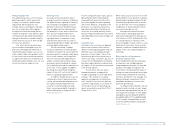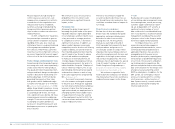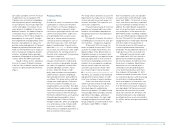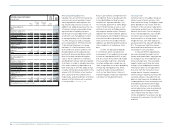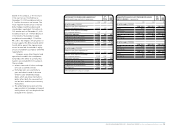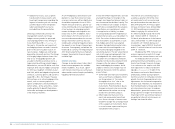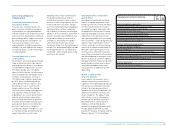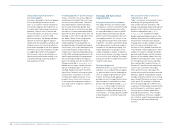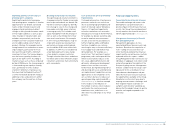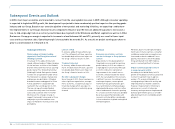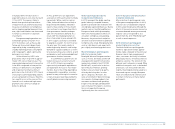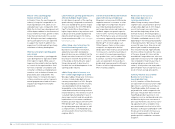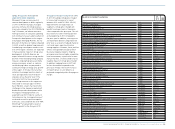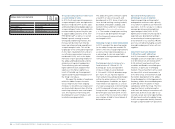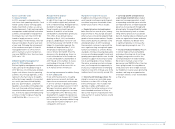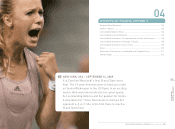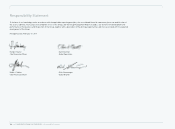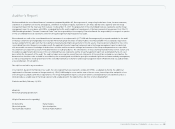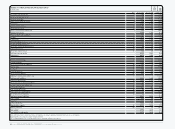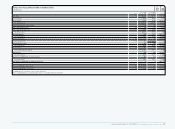Reebok 2009 Annual Report Download - page 161
Download and view the complete annual report
Please find page 161 of the 2009 Reebok annual report below. You can navigate through the pages in the report by either clicking on the pages listed below, or by using the keyword search tool below to find specific information within the annual report.
GROUP MANAGEMENT REPORT – FINANCIAL REVIEW Subsequent Events and Outlook 157
In Europe, GDP in the Euro Zone is
expected to grow at a low rate of around
1.0% in 2010. The region is likely to
benefit from positive spillover effects
of expansive fiscal and monetary policy
measures on domestic consumption as
well as improving global demand. How-
ever, tight credit markets are forecasted
to remain a constraint for corporate
investments.
European emerging markets are
estimated to grow at around 3.1% in
2010. Economies such as Russia and
Turkey are forecasted to be positively
impacted by rising commodity prices,
steadily improving private consumption
and rising exports, albeit significantly
below pre-crisis levels.
In North America, GDP is also
projected to return to growth of approxi-
mately 2.5% versus the prior year. The
unprecedented government intervention
in the USA is expected to have positive
stimulus on both private consumption
and corporate investment activity, in
particular in the first half of 2010. Due to
increasing household spending, imports
are also projected to increase. Neverthe-
less, wealth losses in the course of the
financial crisis and record-high unem-
ployment rates continue to weigh on
domestic demand.
In Asia, growth rates are expected to
accelerate in 2010, particularly in emerg-
ing markets. While countries such as
China, India and Indonesia are likely to
be positively affected by a rebound in
exports, the economy in China should
also continue to see the positive effects
from government stimulus packages
spill over into domestic demand. As a
result, GDP for emerging markets in
Asia is forecasted to grow around 8.0%
in 2010. Japan’s economy is estimated
to expand at around 1.3% in 2010 versus
the prior year. This mainly relates to
modestly growing domestic and foreign
demand for Japanese products as inven-
tory clearance measures come to an end
worldwide, as well as planned additional
government stimulus measures.
In Latin America, growth rates are
likely to increase to a level of around
3.1% in 2010. Private consumption,
export activity and capital expenditures
are expected to increase in most major
markets. Due to the strong dependence
on demand for commodities, economic
growth in many of the region’s countries
is likely to be positively impacted by the
overall global economic improvement.
Global sporting goods industry
to expand only moderately
In 2010, we expect the global sporting
goods industry to expand. However,
growth is projected to be moderate with
considerable regional differences. Mature
markets such as the USA and Western
Europe are faced with high unemploy-
ment rates having adverse effects on
consumer confidence and spending.
Moreover, the promotional and price-
sensitive retail environment is predicted
to improve only slowly. Emerging markets
such as Latin America are expected to
post slightly accelerating growth rates.
Western European sporting goods
industry to remain stable
Developed Western European markets
such as France, Germany and the UK
are expected to benefit from positive
momentum related to the 2010 FIFA
World Cup™, in particular in the first
half of the year. However, growing
football sales are likely to be partly
offset by declining sales in other
sports categories. Moreover, the
retail environment in Western Europe
also remains challenging due to low
consumer confidence and spending.
In light of record-high unemployment
rates in many of the region’s countries,
this is not expected to improve
significantly over the course of 2010.
Sales in European emerging markets
to improve moderately
After a decline of sporting goods sales
in European emerging markets in 2009,
industry sales are expected to improve
in 2010, albeit moderately. Although the
effects of the macroeconomic turmoil on
consumer demand remain pronounced,
industry sales are expected to also
benefit from the 2010 FIFA World Cup™
as well as retail expansion.
North American sporting goods
market highly price-sensitive
The North American sporting goods
market is expected to remain approxi-
mately stable compared to the prior year.
However, due to high unemployment
rates, consumers are likely to continue
delaying purchases, remaining selective
and price-sensitive. The outlook for the
different sport categories is mixed. While
traditional categories such as basketball
and Classics are forecasted to decline
slightly, the emerging toning category is
forecasted to grow strongly. We expect
retail consolidation and rationalisation
to remain in the focus of many market
participants.


